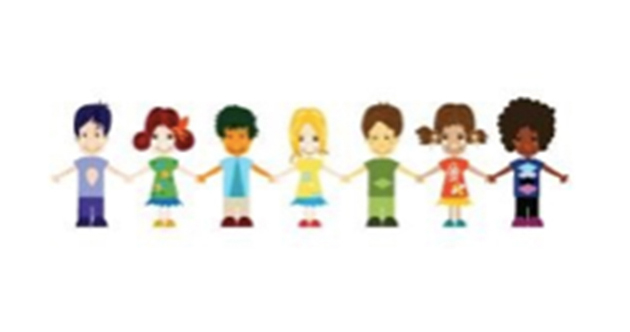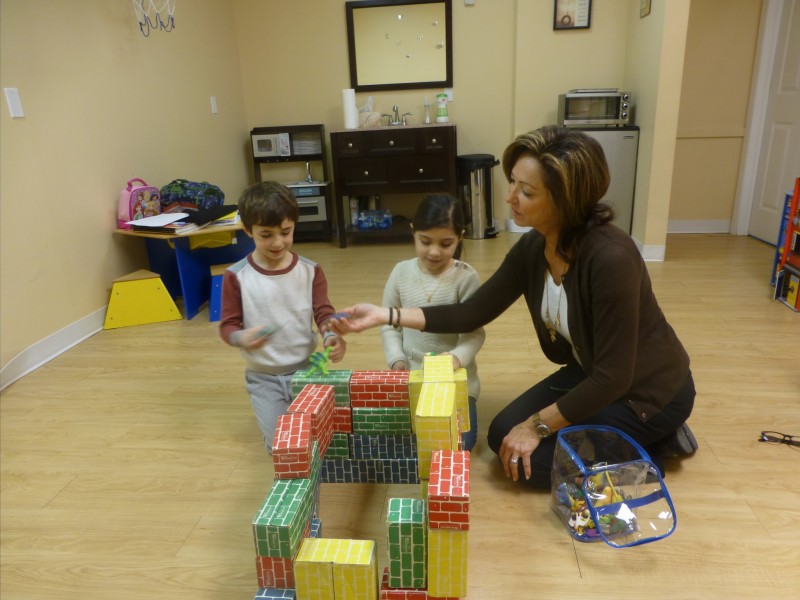Social (Pragmatic) Communication
Social (Pragmatic) Communication Disorders (SCD) is a new diagnosis recognized by the American Speech-Language Hearing Association. It is characterized by a child’s difficulty using verbal and nonverbal communication for social purposes. This, in turn, limits a child’s ability to effectively communicate, participate socially and/or maintain social relationships.
Social (pragmatic) communication refers to communicative intent; the way a child uses language to communicate, rather than the way language is structured. While pragmatic language and social skills development come naturally to most children, others may need help developing or improving these skills.
View our other approaches:
- Apraxia of Speech (CAS)
- Articulation Disorders
- Auditory Processing Disorders (APD)
- Autism Spectrum Disorder (ASD)
- Deviate Swallow (Tongue Thrust)
- Executive Functions Deficits
- Expressive-Receptive Language Delays/Disorders
- Feeding Disorders
- Fluency (Stuttering)
- Oral Motor Disorders
- Phonological Disorders
- Social (Pragmatic) Communication
- Voice and Resonance Disorders
A child may have a Social (Pragmatic) Communication Disorder (SCD) if he/she has difficulty with the following:
Using language for a variety of purposes, such as
- greetings and gaining the listener’s attention
- requesting objects, actions and assistance
- asking and answering questions
- minimizing use of repetitive, redundant speech
Following rules for conversations, such as
- using Whole Body Listening skills
- taking turns in speaking situations
- maintaining a conversational topic
- making relevant contributions to a topic
- interpreting and using appropriate-nonverbal signals (eye contact, body language, facial expression)
Adjusting language according to the situation, such as
- using an appropriate voice (volume, rate, respect)
- talking about events in the recent past, present and future
- expressing thoughts that are logically connected
- providing background information to an unfamiliar listener
- introducing new topics of conversation
- asking for, and providing, clarification during conversation
- retelling and generating narratives in detail
- modifying language to the communication situation (playground, classroom)
 Our treatment approach to Social (Pragmatic) Communication Disorders begins with a receptive-expressive-pragmatic language assessment of the child, including inventories completed by the parents and teachers.
Our treatment approach to Social (Pragmatic) Communication Disorders begins with a receptive-expressive-pragmatic language assessment of the child, including inventories completed by the parents and teachers.
The speech-language pathologist will develop a comprehensive treatment program according to these findings. Our therapy approach includes one-on-one treatment and/or small group therapy sessions, depending on the needs of the child. Carryover in the home and school environments is an integral component of our treatment approach.

The Rosetti Infant-Toddler Language Scale is a criterion referenced instrument designed to assess the communication skills of children from birth through 36 months of age. The scale assesses preverbal and verbal areas of communication and interaction, including: Interaction-Attachment, Pragmatics, Gesture, Play, Language Comprehension, and Language Expression. The examiner may directly observe a behavior that occurs spontaneously, directly elicit a behavior from the child, or use the parent’s or caregiver’s report to credit the child’s performance. Results reflect the child’s mastery of skills in each of the areas assessed at three-month intervals across developmental domains assessed.
The Westby Play Scale, developed by Dr. Carol Westby, is a scale for assessing children’s play. Westby linked pragmatic language use in children to the development of their symbolic play skills. She found that a child’s ability to use language coincides with the emergence of predictable symbolic play schemes. The Westby Play Scale is organized according to developmental levels of play and language. Assessment findings are used to create pragmatic language goals for the 18month to 6 year old child.
The Social-Emotional Evaluation (SEE) is a criterion-referenced assessment designed to evaluate aspects of emotional and social awareness in children ages 6 through 12 years. The abilities probed by the SEE are part of the repertoire of skills that define social-emotional competence. The SEE contains four core subtests (Identifying Common Emotions, Identifying Emotional Reactions, Understanding Social Gaffes, and Understanding Conflicting Messages), one supplemental test (Recognizing Facial Expressions), and a Social Emotional Questionnaire for parents/caregivers and educators.
The Pragmatic Language Skills Inventory (PLSI) is a standardized, norm-referenced teacher-rating instrument that helps identify children ages 5 through 12 years old who have pragmatic language disabilities. The PLSI incorporates the primary characteristics of pragmatic language into three subscales: Classroom Interaction Skills (includes using figurative language, maintaining a topic during a conversation, explaining how things work, writing a good story, and using slang appropriately), Social Interaction Skills (which includes knowing when to talk and when to listen, understanding classroom rules, taking turns in conversation, and predicting consequences for one’s behavior, and Personal Interaction Skills (which includes initiating conversations, asking for help, participating in verbal games, and using appropriate nonverbal communicative gestures.

Practice Playce offers dyads and small groups for 2-7 year olds. Children are placed according to age and developmental level. Traditionally, speech-language therapy or behavioral therapy is recommended to treat children with a social/pragmatic language disorder. Practice Playce is unique because sessions are jointly led by a licensed speech-language pathologist as well as a licensed behavioral therapist. The benefit of selecting Practice Playce is that it is a dual-discipline program designed to best meet the needs of each individual child. (click here for more info)
The Developmental, Individual Differences, Relationship-Based model (DIR/Floortime) approach, developed by Drs. Stanley Greenspan and Serena Wieder, is a comprehensive framework for treating children with autism spectrum disorder. The goal of the DIR model is to help children master the ‘building blocks’ of relating, communicating, and thinking. Floortime, a centerpiece of the DIR approach, is a specific technique to both follow the child’s natural emotions and interests while challenging higher development. In DIR/Floortime the therapist gets on the floor to engage with the child at a level he/she enjoys, enters the child’s activity, and follows the child’s lead. The therapist guides the child toward increasingly more complex interactions, known as “opening and closing circles of communication.”
More Than Words, a Hanen Program for early language development, is based on the social interaction model of language acquisition and emphasizes a family-centered approach to language intervention. Programs are designed for children who have language delays, as well as for children developing within age level expectations. The Hanen philosophy is to provide multiple opportunities for children to engage in social language throughout the day. The program instructs, models, and supports parents to be effective social language facilitators.
Social Thinking Curriculum, developed by Michelle Garcia Winner is a developmental treatment approach for children with social pragmatic challenges. This process includes a framework of “social thinking” to help the child understand and use appropriate social skills at home, school, and other social situations. This model of thinking integrates evidence based research to help the speech-language pathologist, child, educators and parents systematically organize a treatment plan for social interaction, problem solving and the ability to interpret and respond to social language pragmatic situations.
Social Stories, developed by Carol Gray, was designed to teach children the social skills that they may find difficult to understand or are confusing. The objective of each simple, illustrated story is to increase the child’s understanding by describing in detail a specific situation and suggesting an appropriate social response. These evidenced based stories include such topics as Me and My Feelings, Bullying, Celebrations, People Skills and Friendship, Home and Community, and School. This program provides directions and tools for the child to write his own social stories.
Narrative Language, focuses on improving a child’s story-telling ability, including the ability to provide context for the listener; use narrative structures to organize events; and utilize microstructure (syntactic complexity, temporal and causal conjunctions, coordinating conjunctions, elaborated phrases, and adverbs) to enhance the clarity of the narrative. Narratives can provide a naturalistic means of targeting specific language difficulties.
At Suburban Speech Center, our comprehensive auditory processing treatment approach is individualized to each child’s needs. Home carryover is an integral part of the program. Each child is provided with a speech notebook that contains age appropriate treatment objectives and interactive exercises.
